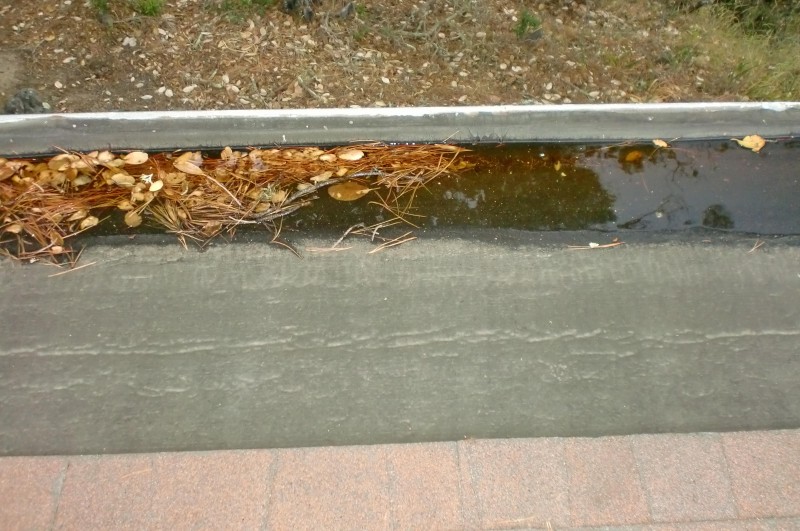When your ceiling springs a leak
November 8, 2025 at 6:00 a.m.By: V.C. Veterans Contracting.
What starts as a small drip can be a warning sign your roof is in serious trouble; here’s why you shouldn’t ignore it.
It only takes one drip. One slow, silent trickle sneaking through the ceiling to throw your entire home into chaos. But while water leaking from above may seem like a sudden surprise, it’s usually the result of something much more serious. At V.C. Veterans Contracting, we’ve seen how fast a minor ceiling leak can spiral into a full-blown disaster, costing homeowners thousands in repairs, mold remediation and structural damage. Knowing what that water really means is the first step to stopping the damage before it spreads.
Understanding the signs of a ceiling leak
The first step in addressing a ceiling leak is to identify the problem. Here are the most common signs to look out for.
- Water stains or discoloration: One of the earliest signs of a leak is an unsightly water stain — a discolored, yellowish or brownish patch on your ceiling. Often, it starts small and grows if left unattended.
- Sagging or bubbling ceiling: When water accumulates behind the drywall or plaster, it can cause your ceiling to sag, bubble or warp. This is a sign that the issue has been progressing for some time and risks a potential ceiling collapse if not resolved.
- Dripping water: If water is visibly dripping from your ceiling, it’s a surefire sign of a more advanced leak. This requires urgent action to prevent further damage, as the source of the water is still actively flowing.
- Persistent damp smell: Even if visible signs of water damage are absent, a damp or musty smell could be an indication of a hidden leak. Mold growth often accompanies leaks, making this smell a red flag for underlying water issues.
- Mold or mildew growth: Mold or mildew appearing on your walls or ceiling is a strong indicator of excessive moisture, often due to a leak. Not only is mold unsightly, but it also poses health risks, particularly for those with allergies or respiratory issues.
5 common causes of ceiling leaks
Understanding where the water is coming from is key to fixing the issue. Here are the most common causes of water leaking from a ceiling and how to identify each one.
1 – Plumbing issues
Leaking pipes are a frequent culprit, particularly if the ceiling is directly below a bathroom or kitchen. The leak could be due to a burst pipe, loose plumbing fittings or failed sealing around fixtures like tubs or sinks.
How to identify:
- Check for leaks in water lines, especially those connected to sinks, toilets or bathtubs.
- If water appears after using a specific appliance (like flushing the toilet), it’s likely related to plumbing.
2 – Roof damage
A damaged roof can result in rainwater seeping through and collecting on your ceiling. Missing shingles, cracked tiles or clogged gutters can impair your roof’s ability to keep water out.
How to identify:
- Check the attic for wet insulation or visible water trails during or after heavy rain.
- Inspect the roof for visible damage, such as missing or broken shingles.
3 – HVAC system condensation
If you have a central air conditioning system, improper drainage of condensation can create ceiling leaks. This typically happens when drain lines are clogged or improperly maintained.
How to identify:
- Look for leaks near air vents or the area where your HVAC system is installed.
- Water may also collect around the drain pan area.
4 – Faulty caulking or seals
Sometimes, the culprit isn’t a pipe or the roof. Poorly caulked windows, doors or vents can allow rainwater to enter the house and settle in your ceiling.
How to identify:
- Inspect any caulking around windows, doors and outside vents for cracks or gaps.
5 – Overflowing gutters
Clogged or poorly designed gutters can cause rainwater to overflow and seep into your home’s interior, eventually making its way to the ceiling.
How to identify:
- Check for water pooling near the edges of your gutters or streaks of water down the side of the house.
What to do when you spot a ceiling leak
Discovering a ceiling leak can be overwhelming, but taking swift action can minimize damage and costs. Follow these steps to address the issue effectively.
Step 1: Contain the water
If water is actively dripping, place a bucket or container beneath the leak to catch the water. Protect your furniture and flooring with plastic sheeting or towels.
Pro tip: Use a screwdriver to carefully puncture the center of a sagging area on the ceiling. This helps to release built-up water in a controlled manner, preventing further spreading within the ceiling.
Step 2: Locate the source of the leak
Identifying where the water is coming from is crucial to resolving the issue. Use the common causes listed above to help locate the source.
Step 3: Turn off the water supply (if applicable)
If the leak is related to plumbing, shut off the water supply to the affected area to prevent further leakage.
Step 4: Call a professional
While DIY repairs might seem tempting, it’s best to call an experienced plumber, roofer or contractor to properly assess and fix the leak. Attempting a fix without expertise could worsen the situation.
Step 5: Dry out the area
Once the leak has been resolved, use fans and dehumidifiers to dry out the affected area. This helps prevent mold growth and further damage.
Step 6: Repair damaged ceiling
Finally, patch or replace the damaged portion of the ceiling. This might involve replacing drywall, repainting or refinishing the surface.
Preventing future ceiling leaks
The best way to deal with a leak is to prevent it from happening in the first place. Here are some proactive measures you can take.
- Regular roof inspections: Check your roof for damage at least twice a year, especially after storms. Address any issues like missing shingles or cracks promptly.
- Maintain gutters and downspouts: Clean out your gutters regularly and ensure your downspouts direct water away from your home’s foundation.
- Monitor plumbing: Periodically check for signs of wear in your plumbing system, such as loose connections or rusting pipes. Address issues immediately.
- Service your HVAC system: Schedule regular maintenance for your HVAC system. Make sure the condensation drain line is clear and functioning properly.
- Seal windows and doors: Inspect and reapply caulking or weather-stripping around windows, doors and vents as needed to ensure a watertight seal.
- Insulate your home: Proper insulation helps to regulate temperature and minimize condensation inside your home, reducing the likelihood of leaks.
When to call a professional
While minor issues like resealing a window might be DIY-friendly, most ceiling leaks are better handled by professionals. Call for expert help if you notice any of the following:
- Water is actively dripping or pooling on your ceiling.
- The leak is associated with complex systems like plumbing or HVAC.
- Mold or structural damage is evident.
- You’re unable to locate the source of the leak.
Hiring a professional ensures the problem is addressed thoroughly and prevents further damage to your home.
The hidden costs of ignoring a ceiling leak
Perhaps you’ve spotted a small water spot and are debating whether it’s urgent to fix. Here’s why you should act immediately.
- Structural damage: Water can weaken structural components like beams and drywall, leading to sagging or collapse.
- Mold growth: Excess moisture creates the perfect environment for mold, which can pose health risks and spread rapidly.
- Escalating repair costs: The longer a leak goes unfixed, the more damage it can cause, leading to higher expenses down the road.
Fixing a ceiling leak promptly can save you money and protect your home’s value.
Water leak solutions for every roof
Water leaking from your ceiling may feel like a disaster, but with the right approach, it’s manageable. The key is spotting and addressing the issue quickly, identifying the root cause and taking preventative measures to protect your home.
If you suspect or discover a leak, don’t delay — take action now by investing in professional commercial roofing solutions to minimize damage and avoid costly repairs later. And remember, if you’re unsure where to start or overwhelmed by the problem, calling a residential, commercial or multi-family roofer is always a smart move for your specific needs.
Original article source: V.C. Veterans Contracting
Have a question? AskARoofer.
Find your local roofing contractor in the AskARoofer™ Contractor Directory.














Comments
Leave a Reply
Have an account? Login to leave a comment!
Sign In